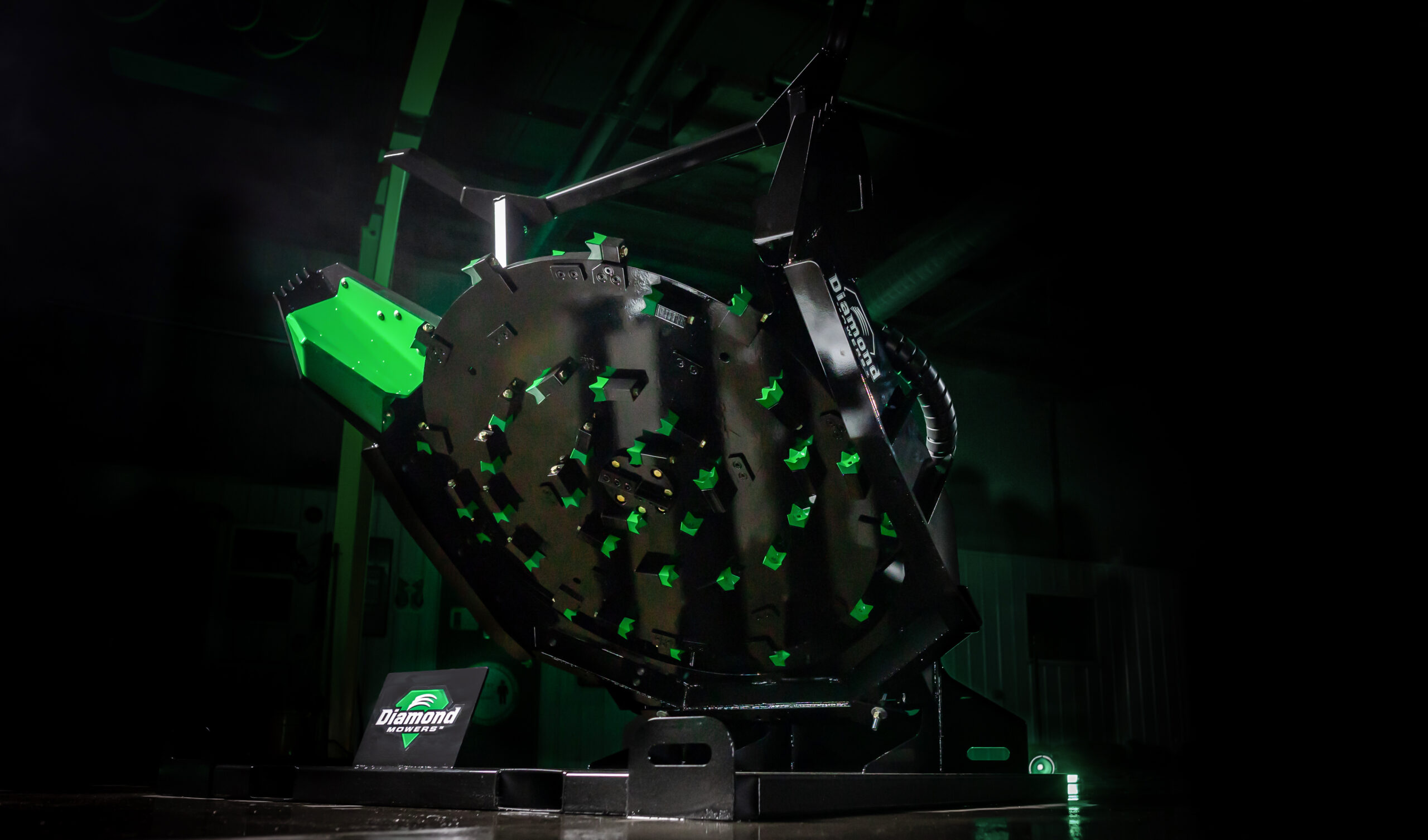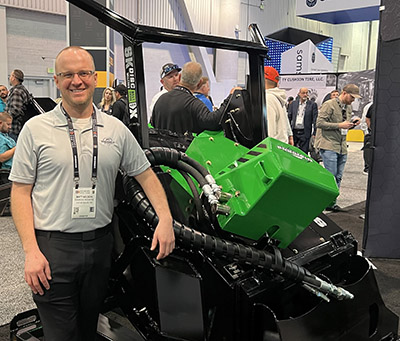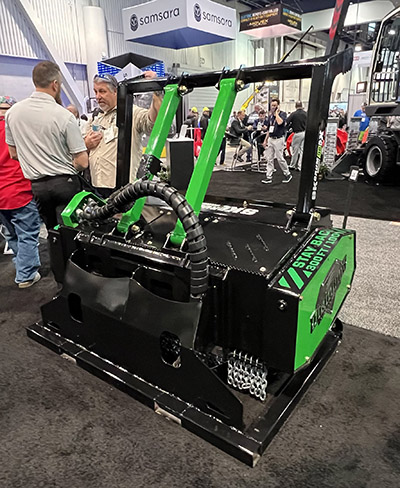
Mobile hydraulics is often called on for tough forestry jobs, and Diamond Mowers’ new Belt Drive Disc Mulcher is suited for contractors and mulching professionals who specialize in land clearing, vegetation and forestry management, and pasture reclamation. It features increased torque to obliterate anything in its path without slowing down, recovers twice as fast as other mulchers, and boasts an efficient design that promotes lower hydraulic temperatures for maximum uptime and carrier life.
Enhanced forward visibility ensures that contractors won’t accidentally hit obstacles and can better position vegetation for optimal performance. The mulcher features a 60-in. cutting width and can slice through trees and brush up to 14-in. in diameter. It also shreds material up to 6-in. in diameter and attaches to most skid-steer and compact track loaders.
The mulchers can be used for clearing land in some unexpected ways. According to Matt Nelson, an engineer with the company, these products are critical for maintaining landscapes. And while the machinery is said to “eat trees,” the goal is generally to help with the environment, not hurt it.
“Out west, say in California or Oregon, defensible space is a really big deal. People need to protect homes and other structures that are built into the forest, from occasional forest fires. You need to remove all that scrub brush, which are often called ladder fuels,” said Nelson. “So, when — not if — a fire comes through, it’s much easier to protect those structures. These mulchers are the perfect solution.”

The skid-steers that Diamond Mowers’ attachments are used with are small and nimble, and thus, they are able to get in between the houses to clear out this type of scrub brush. In addition, in areas like the Midwest, Nelson said that cedar trees are growing at a rapid pace, taking over rangelands.
“If you were to go to areas of the Midwest years ago, it’d be nothing but grass,” Nelson said. “But today, if you go to Oklahoma, Kansas, or Nebraska, you’ll see a lot of cedar trees. And those cedar trees are drinking 20 to 30 gallons of water each day. That rancher obviously, is making money on raising cows. If you can’t have as many cattle on a particular piece of property, it’s impacting your bottom line in a really big way. This equipment is the fastest way to remove those invasive species.”
Nelson also noted that in the eastern half of the U.S., you’ll see their products in residential site development, for irrigation canal maintenance, or anywhere that trees aren’t wanted.
Developing the mulcher
Historically, a disc mulcher has used a fixed displacement motor. Nelson said that’s akin to running on a single speed bicycle. When a user turns the high flow on, it’s going to take almost a minute for the large wheel to come up to speed. That wheel, using all of that stored energy, is really how these machines work. With the old designs, you just had to be patient. Diamond Mowers incorporated a variable displacement motor, running through a belt drive with a roughly three to one reduction system. And they’ve taken that former minute of waiting for the spool uptime and reduced it down to 13 seconds.
“What that gives the customer is a measurable 20% to 30% base increase in productivity,” said Nelson. “Plus, cooler hydraulic temperatures, because the machine itself is spending less time in relief, and we are not wasting all that energy. It’s designed specifically for that customer who’s using these disc mulchers for profit, and we’re really excited about the new design.”
Nelson noted that the design improvement is an adaptation of the company’s related line of drum mulchers. With those devices, a variable displacement belt driven system has been used for many years, but the concept had just never made its way over to the disk space.
“So even though it’s new to the industry and it’s delivering all this performance, it’s using components that we have a long and successful history with,” he said.
Nelson stressed that their customers are first and foremost concerned with uptime.
“Uptime first, and then productivity and performance. I lump those things into the same bucket as their second concern. And then ease of use, and ease of maintenance is their third concern,” he said.

Diamond uses a Rexroth A6107 variable motor as the prime mover, the same motor they are using in the drum mulchers. Nelson believes it is probably the most prominent motor in the mulcher space. A Kevlar stranded poly chain belt is used in the drive system for durability.
One long frustration has been that hose protection and routing can be difficult on these types of attachments. The hoses are constantly getting pushed and pulled, and they’re also getting scraped and twisted. Thus, protecting those hoses is really important. Hose leaks aren’t something that anyone wants to deal with (especially in the field), so all of the Parker Hannifin hydraulic hoses that are used are wrapped for additional protection. But there was one more new solution with the hoses that’s been a big success.
“Especially in the mulching space, these hoses are constantly getting pulled and pulled — and it’s particularly hard on the couplers,” said Nelson. “The flat face couplers just don’t hold up. So, what we did is we incorporated swivels from Super Swivels. Because of that, we’re able to use a much shorter hose length, which really limits the amount of push and pull. And we’re seeing a lot better hose life, because of the incorporation of these swivels.”
Diamond Mowers
diamondmowers.com
Filed Under: Components Oil Coolers, Mobile Hydraulic Tips, Pumps & Motors, Trending